Have you ever been looking for a new pair of running shoes, or maybe a new coffee maker or blender, and immediately went to Google to search for the answer?
Your search probably looked something like “best running shoes of 2024” or “best coffee maker for one person” and showed you links to articles from sites like Runner’s World or Epicurious.
This is commerce content.
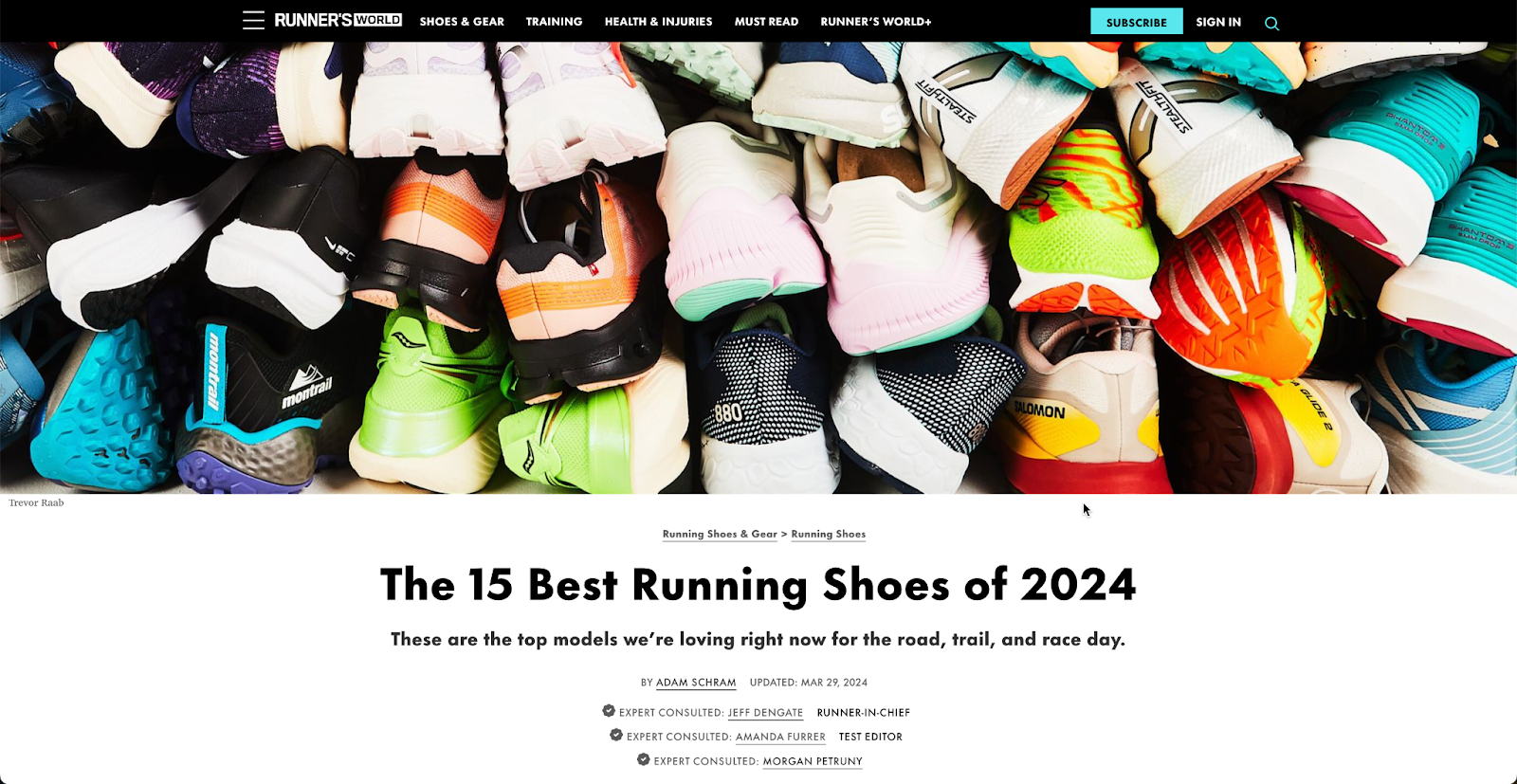
In this guide, we are going to explain what commerce content is, how it works, and show you a few examples so that you’ll have a better understanding when you’re browsing for your next online purchase.
If you run a business that sells products online, you’ll also learn how you can incorporate commerce content into your marketing strategy to get more customers.
Understanding the Basics of Commerce Content
Commerce content is editorial, from a publisher such as The New York Times or GQ, that promotes a particular product or brand. It can come in many forms, be called different names, and be used differently by brands and publishers, but ultimately, it’s a method of selling that appears to be an organic news story, rather than a regular ad or TV commercial.
Commerce content combines written storytelling with marketing, seamlessly.
By nature, commerce content isn’t purely PR or timely journalist coverage and it’s produced by different teams, writers, and agencies. (More on this later.)
But what does a piece of commerce content actually look like? The Google search result from above will take you to a page titled something along the lines of “The Best Running Shoes of 2024” or “The Best Blenders For You To Eat Healthier This Year.”
These are called “listicles” or “roundups” because they create a list of the products they most recommend based on research, testing, and experience. While these listicles are one of the most popular forms of commerce content, there are many more.
How Does Commerce Content Work?
Commerce content involves a few different parties since it’s not just a story about a new brand launching or a product being released for the first time. The two main players are publishers (those producing the content) and brands (those being written about).
In this relationship, brands offer publishers a commission on the sales that they drive. This is called affiliate, or word-of-mouth, marketing. The links placed within the story are called affiliate links, and if you click on the URL you’ll notice that they’re different from regular links as they have information that uniquely identifies the publisher so that every sale is tracked.

The revenue generated from affiliate links is how publishers are able to stay in business. And without coverage from these publishers, brands are losing out on potential sales.
While the main people involved are the brand and publisher, there are also several supporting roles in commerce content. A brand will often hire an agency to help recruit and manage publishers and negotiate terms on their behalf. Publishers need a lot of help with the content creation process, and this usually involves writers, editors, photographers, and more.
If you’re curious how commerce content affects you, here’s how it works for different parties:
Commerce Content for Online Businesses
If you have an ecommerce brand or sell a software product, you can use commerce content to find new customers.
- First, you have to set up an account on a platform like Impact or Awin to create affiliate links and track sales.
- Then, you start the hard job of finding and recruiting publishers to talk about your brand. This is the hardest part as publishers have plenty of brands pitching them every day.
- Finally, you need to maintain those relationships, negotiate commission rates, and keep publishers up to date on sales that you’re running throughout the year.
Commerce Content for Consumers & Readers
While nothing really changes about your online reading experience, you should be an educated consumer when browsing the web. First, you should be aware that any time you read about a product or brand on a blog or news site, there’s a high likelihood that the website is getting paid to talk about that brand. Not always, but most of the time.
This shouldn’t necessarily make you skeptical about everything you read online, but it’s a good thing to keep in mind.
What Commerce Content Is and Isn’t
Commerce content is:
- Engaging editorial content that looks like any other blog post or article
- Inherently promotional, though it doesn’t look like an ad
- Typically from a third party, like a newspaper or magazine
- A relationship between a publisher and a brand or agency
But it isn’t:
- Breaking news or coverage on world affairs
- Traditional public relations
Commerce Content vs. Traditional PR
All of this information may have you questioning what the difference between commerce content and normal PR is. The truth is, the lines between the two are blurring rapidly, and agencies that manage commerce content relationships are slowly starting to offer PR services as well because the two are so similar.
Generally speaking, the main difference between the two is that commerce content is typically created around search terms and uses SEO techniques to drive traffic, while PR is more about telling a story to an existing audience.
PR is current news about brands and company updates, while commerce content is evergreen, focusing more on how a product functions. Commerce content will always include affiliate links so that the publisher is making money off of their work, while PR stories may or may not have affiliate links.
Additionally, the teams that produce commerce content are typically entirely different than the teams that create traditional news stories, so for brands, the people that they need to develop relationships with are entirely different.
Types of Commerce Content
Commerce content can be grouped into a few primary categories:
Listicles, Buying Guides, & Roundups
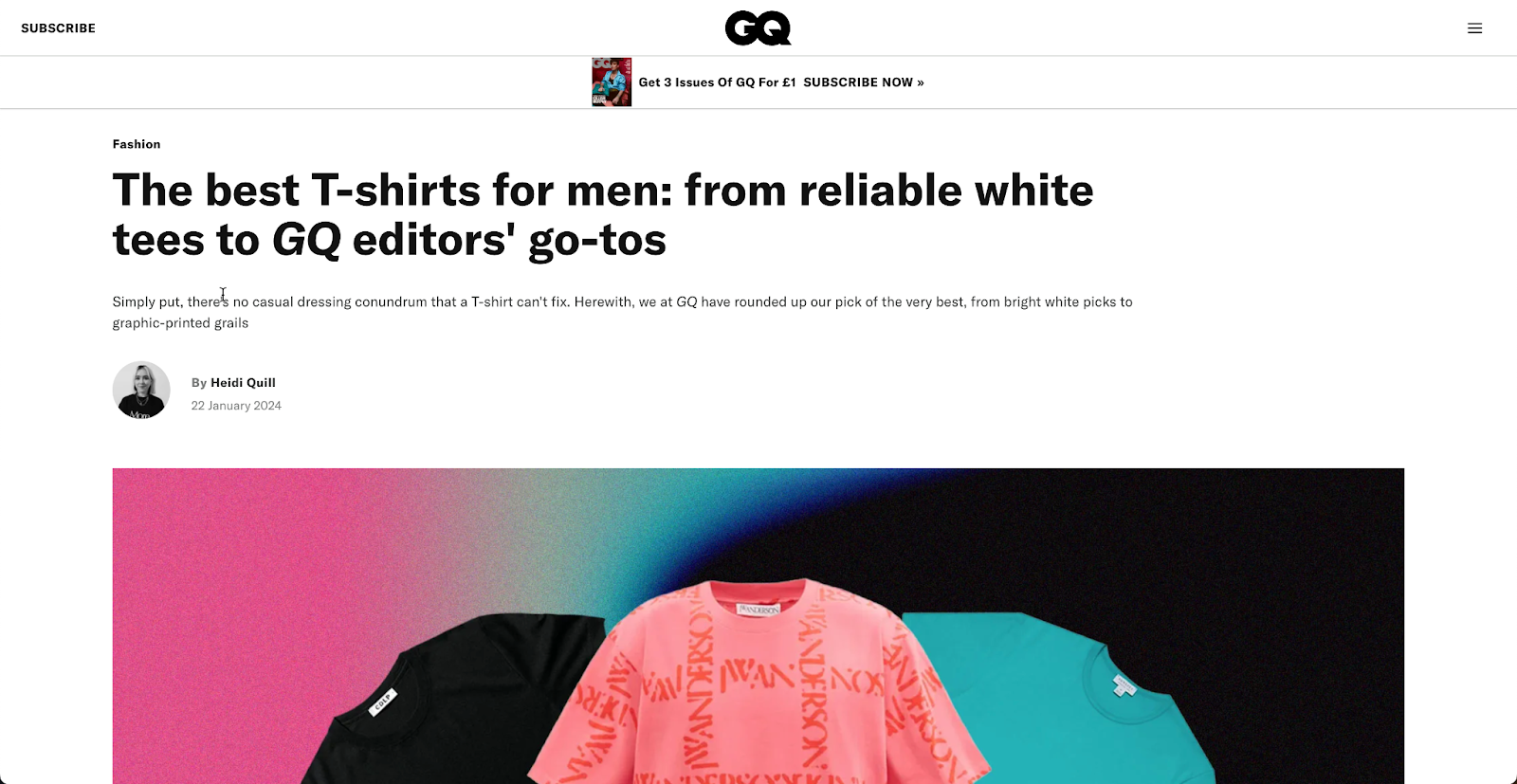
Perhaps the most evident form of commerce content is listicles. These are, like they sound, a list of products and brands that fit a certain category of products.
Their goal is to provide several options for different types of people or use cases. Each nomination is referred to as a “superlative.” Think back to your high school yearbook at who was “Most Likely to Become President,” listicles provide what brand is best for what situation.
Examples of superlatives are “Best Overall,” “Best Luxury,” and “Best Budget,” to name a few.
Dedicated Reviews
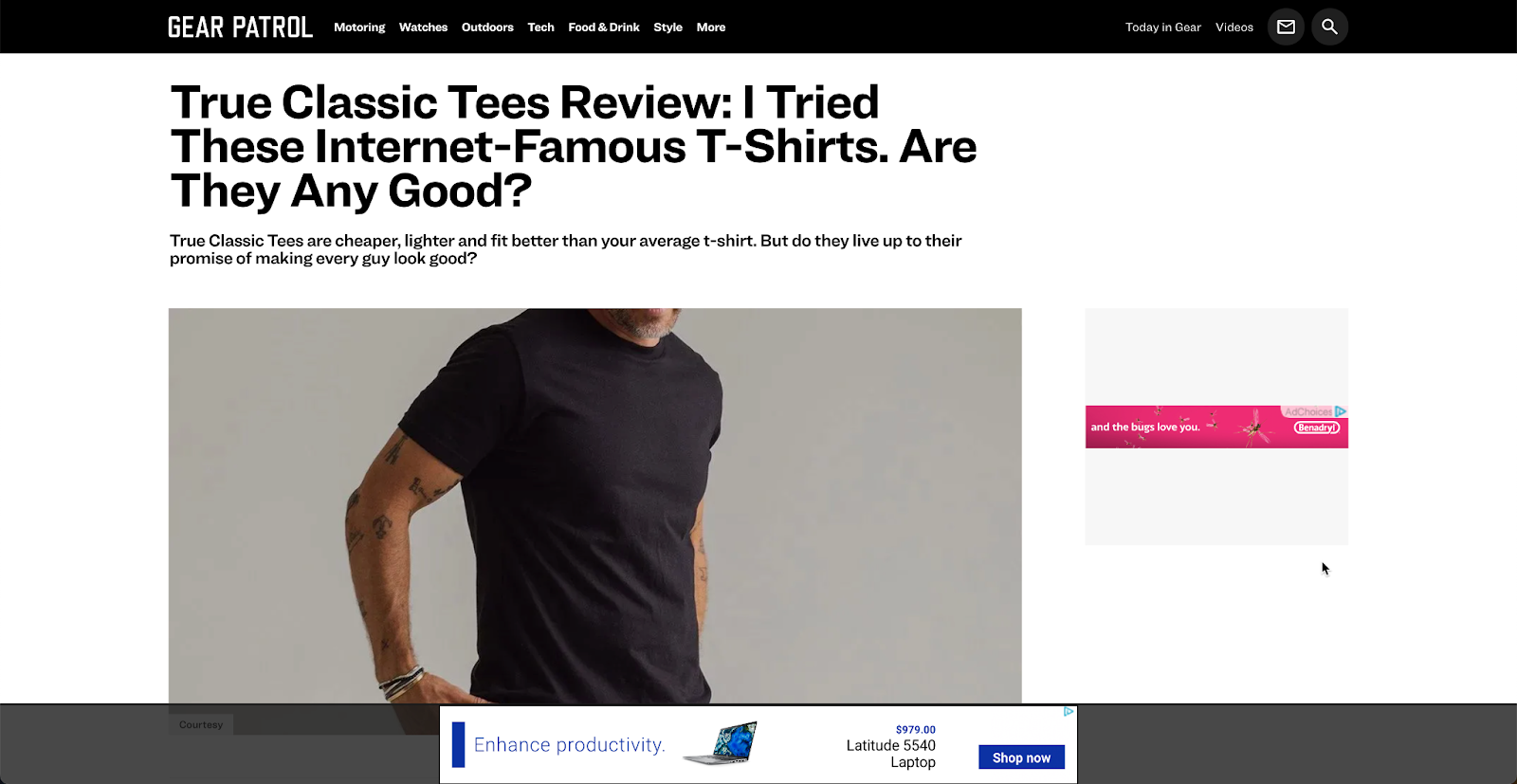
Reviews, unlike listicles, are focused on one singular product or brand. Rather than compiling a list of multiple products with short descriptions, dedicated reviews go in depth on a certain product with hands-on testing, real-life photography, and a personal narrative of the writer’s experience with the product.
The goal for dedicated reviews is to help customers make a decision about buying a certain product or not. The potential customer is likely very familiar with the brand and interested in it, but they’re not yet convinced that it’s worth their money.
Dedicated reviews give a potential customer the confidence necessary to finally make the purchase, because they’ve heard from a third party that the product is good (or not) and seen them actually use it.
SEO-Based Features & Comparisons
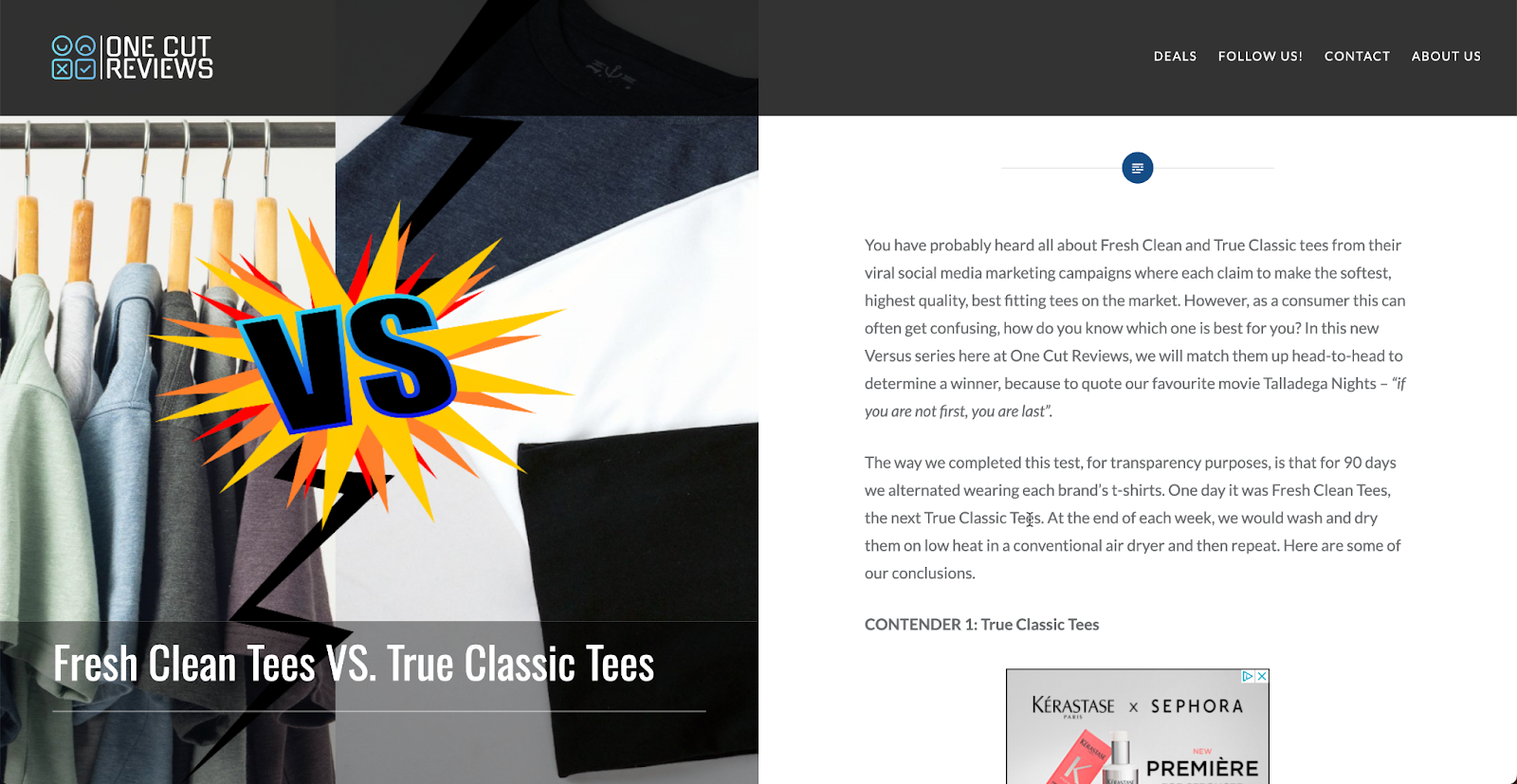
There are certain types of content that aren’t as conversion focused, but they still can capitalize on search volume to drive sales. SEO-based features are content that answers a question that people are asking, and naturally weaves a brand or product into the story.
A good example of this is say that you’re trying to figure out how to clean a cashmere sweater, so you search “how to clean cashmere” on Google. The top result is from a blog that creates content around the home and kitchen and is titled “How to Clean Cashmere: The Ultimate Guide.”
Throughout this piece, the blog gives generic information on why cashmere requires a special cleaning process, how to do it, and could recommend a particular brand of cashmere cleaning detergent with its store link throughout it.
Another form of this SEO-based content are comparisons. A lot of people may be trying to decide between an iPhone and a Samsung, so they search “iphone 15 vs samsung galaxy s24.” A tech blog can do a full comparison between the two, explaining which one is better and all the features each phone has.
Examples of Commerce Content Publishers
Here are some of the most well-known publishers and niche blogs that produce commerce content.
General: The New York Times Wirecutter
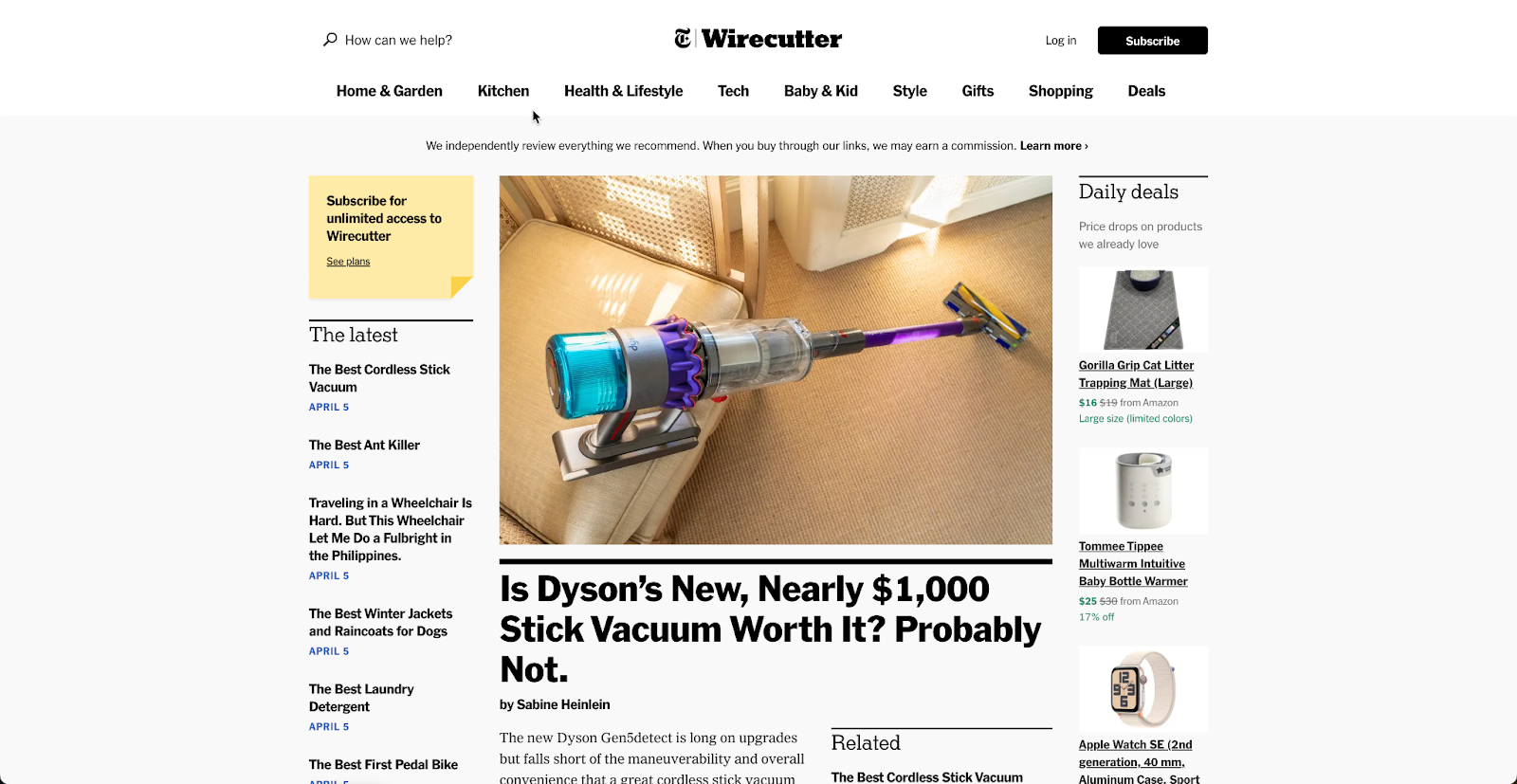
Wirecutter was founded in 2011 by a former technology journalist and editor as a product review site. The New York Times bought the blog in 2016 in an effort to evolve with the changing digital landscape and find another way to monetize their content aside from traditional ads. It turned out to be a great bet.
Wirecutter is known for producing some of the best commerce content on the internet. Oftentimes, they’ll physically test products in their own lab, with beautiful photography accompanying their experience.
Ecommerce brands love being featured in Wirecutter because it gives them the seal of approval from one of the most widely recognized names in media, The New York Times.
Food & Drink: Bon Appétit
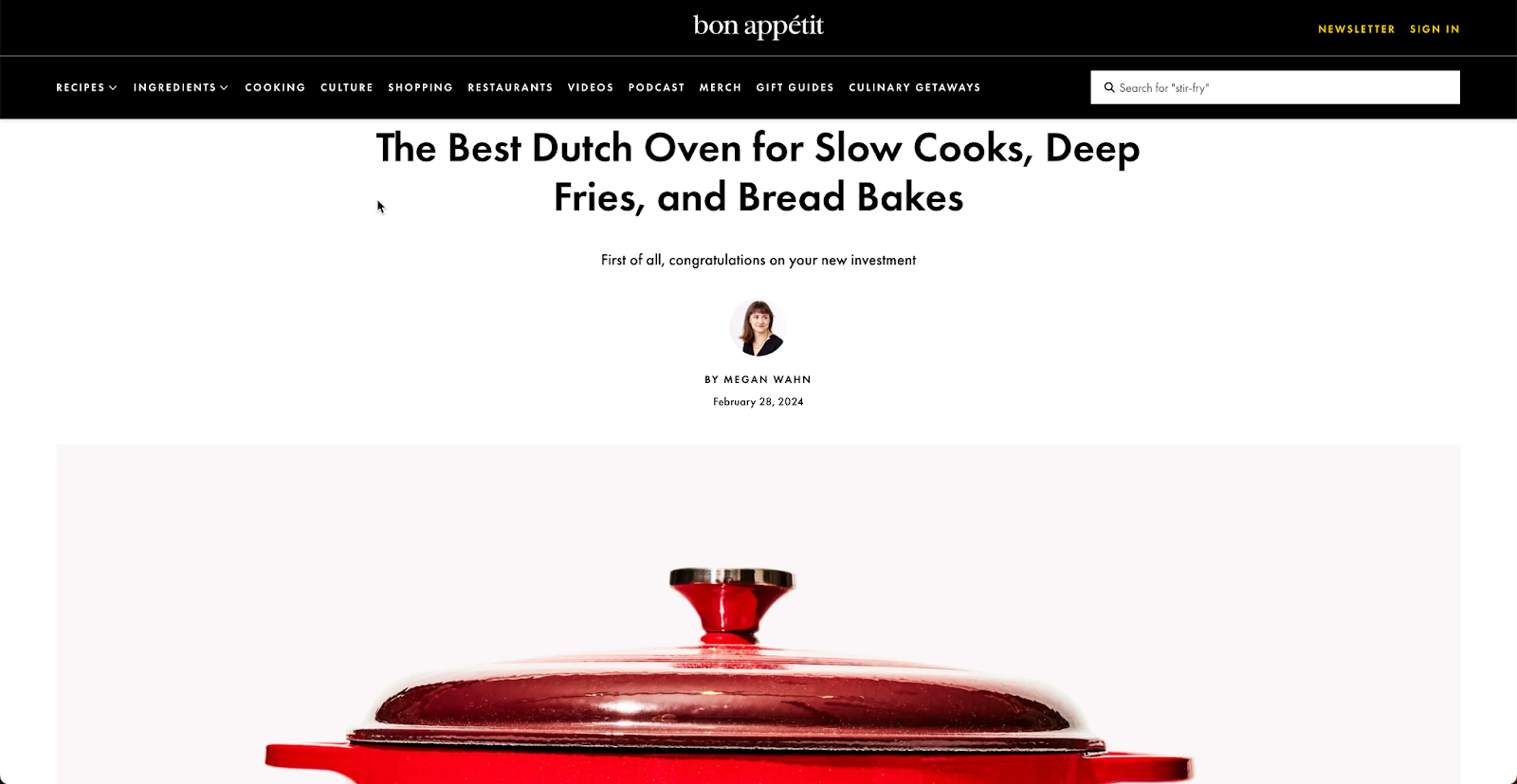
Bon Appétit is owned by media giant Condé Nast and produces extensive content around recipes, restaurants, chefs, and other food-related content, in addition to its content commerce shopping vertical. Because it specializes in food, its work primarily revolves around cookware and kitchen appliances.
Finance: NerdWallet

NerdWallet is a site focused on all things personal finance. They review credit cards, insurance companies, and more, as well as produce helpful articles on common finance questions. NerdWallet is its own company (unlike many of the names you come across everyday), not owned by any larger media conglomerates.
Home Niche Blog: Jenna Kate at Home
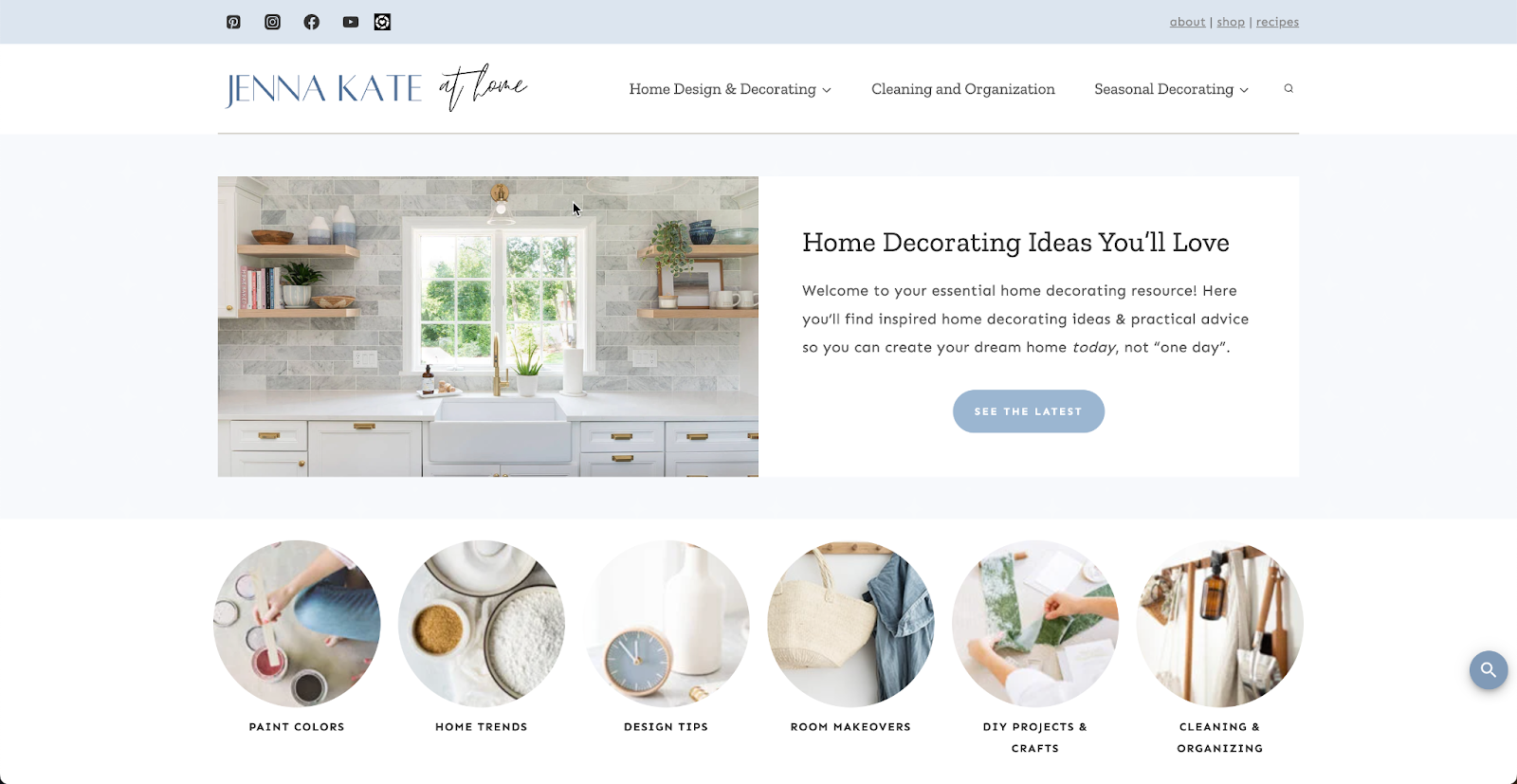
Niche blogs are smaller sites, typically owned by the person who started it, and focus on one category. They don’t have massive teams of writers and editors, and thus the stories are often more personal and intimate.
Jenna Kate at Home focuses on interior design, homegoods, and cleaning and organization.
Men’s Lifestyle Niche Blog: Ape to Gentleman

Similarly, Ape to Gentleman is a lifestyle blog specifically for guys trying to look better, get in shape, and come off as a more conventionally attractive man in general. They create guides, reviews, and news stories focused on brands catered to men.
Browsing through a site like Ape to Gentleman is similar to going through a men’s department store rather than Target or Walmart—you’ll find style advice and hand-picked brands that you’ll love.
Pet Niche Blog: Dog Lab
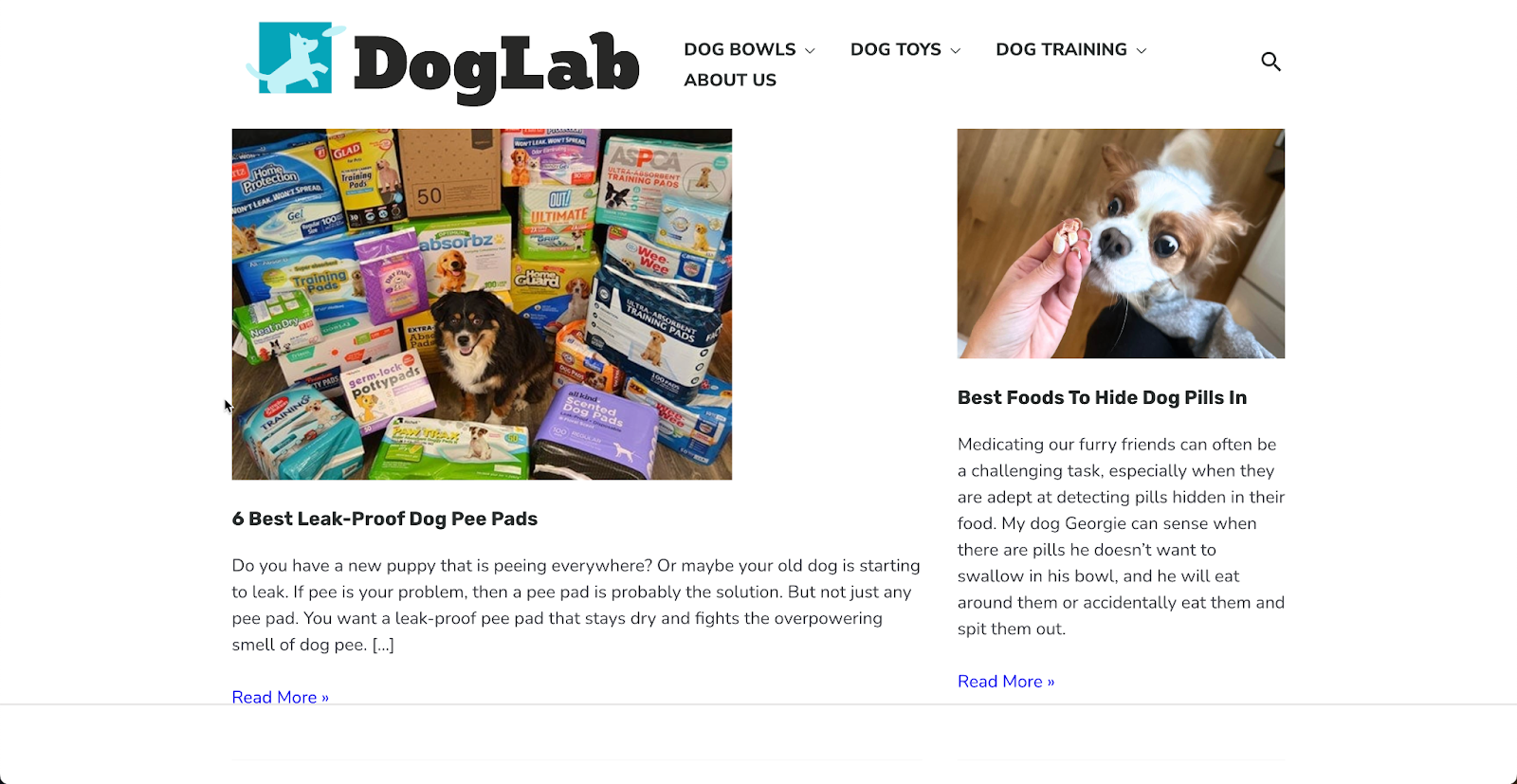
Niche blogs don’t have to be around products for humans, sites like DogLab create content around products for pets like toys, beds, and food. They also have a strong library of training guides to help people become better pet owners.
Examples of Commerce Content Articles
Here are some of the most common forms of commerce content you’ll see when you’re browsing online.
Sports Illustrated’s Pickleball Paddle Roundup

The roundup is all about the best pickleball paddles available in 2024. It features superlatives such as “Best Pickleball Paddles for Beginners” and “Best Pickleball Paddles Under $100.”
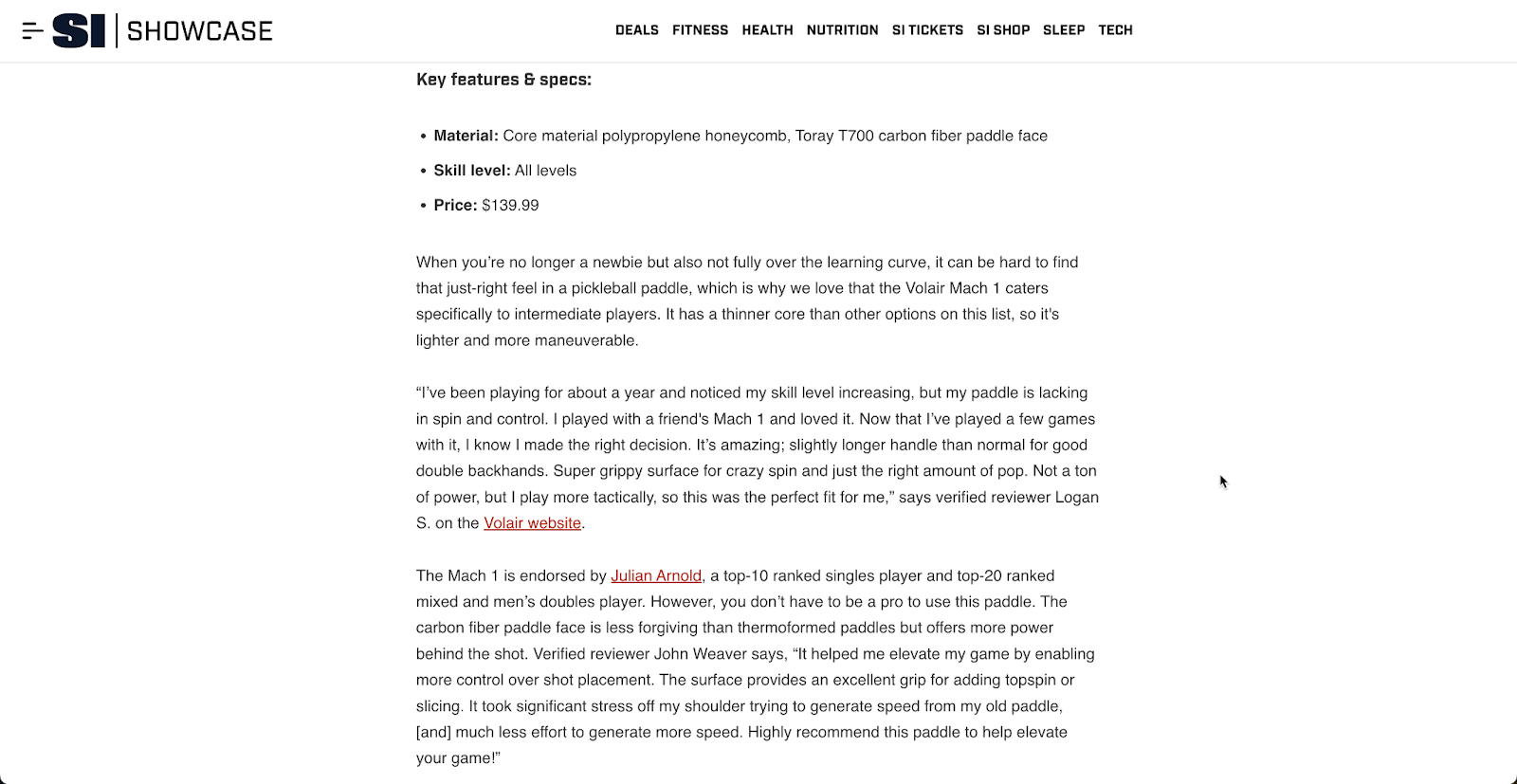
Notice how each section lists out the materials, price, and detailed descriptions about the individual model and why it’s the best for the given superlative.
Epicurious' Coffee Maker Roundup
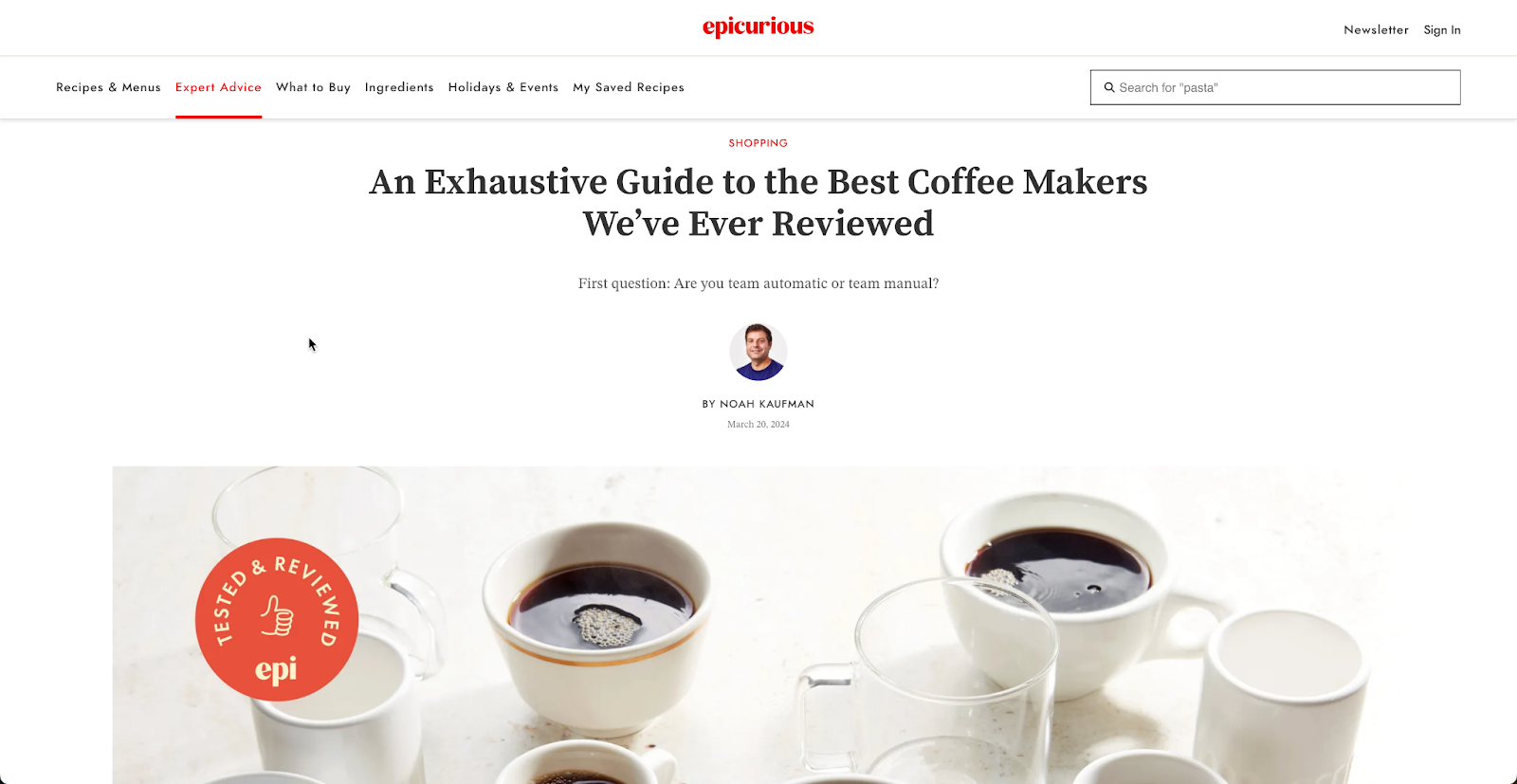
Epicurious combines their years of review experience into one piece of content covering all different types of coffee makers.
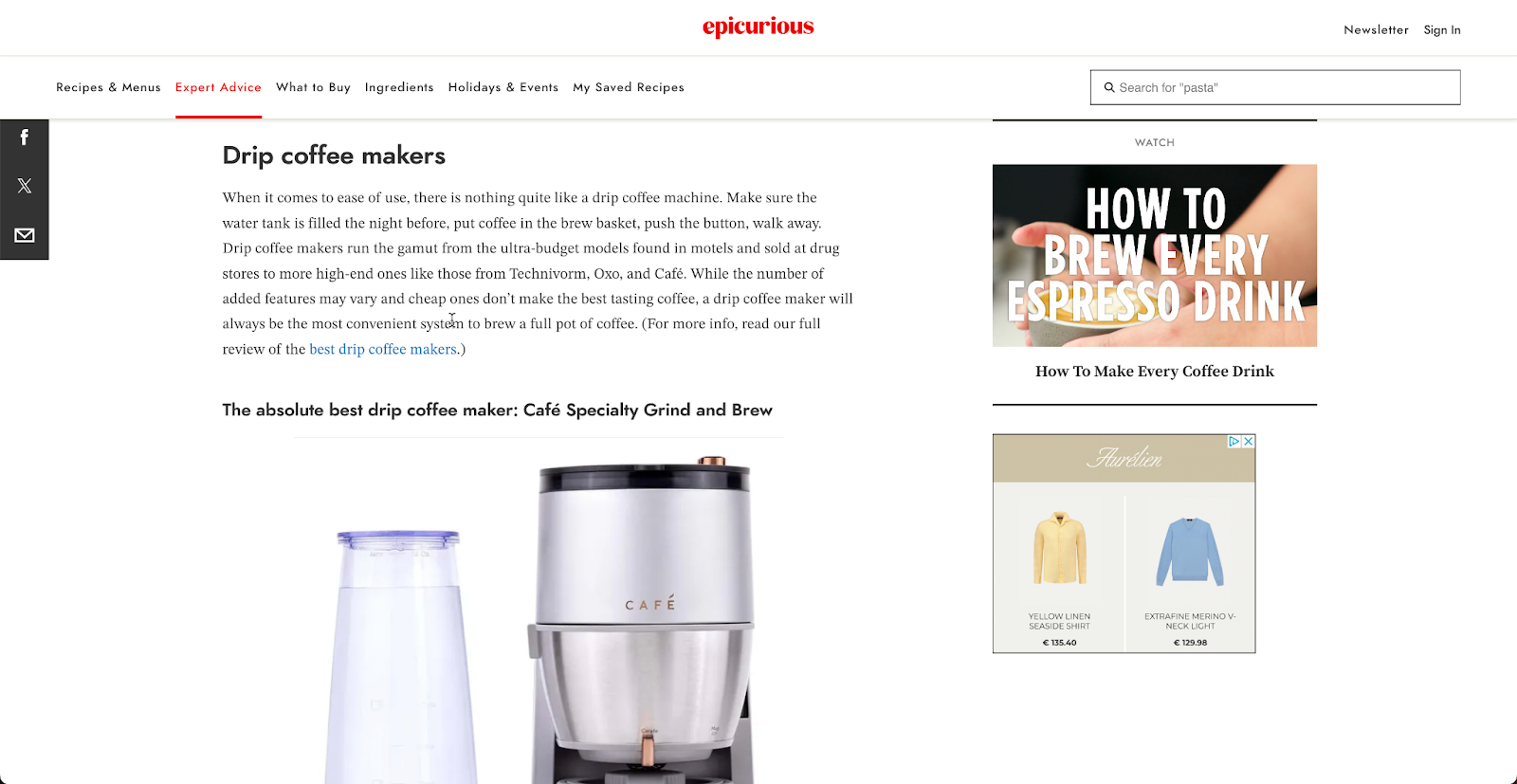
They give several top brands for each category with specs and options to purchase.
Garage Gym Reviews’ Nike Metcon 8 Review
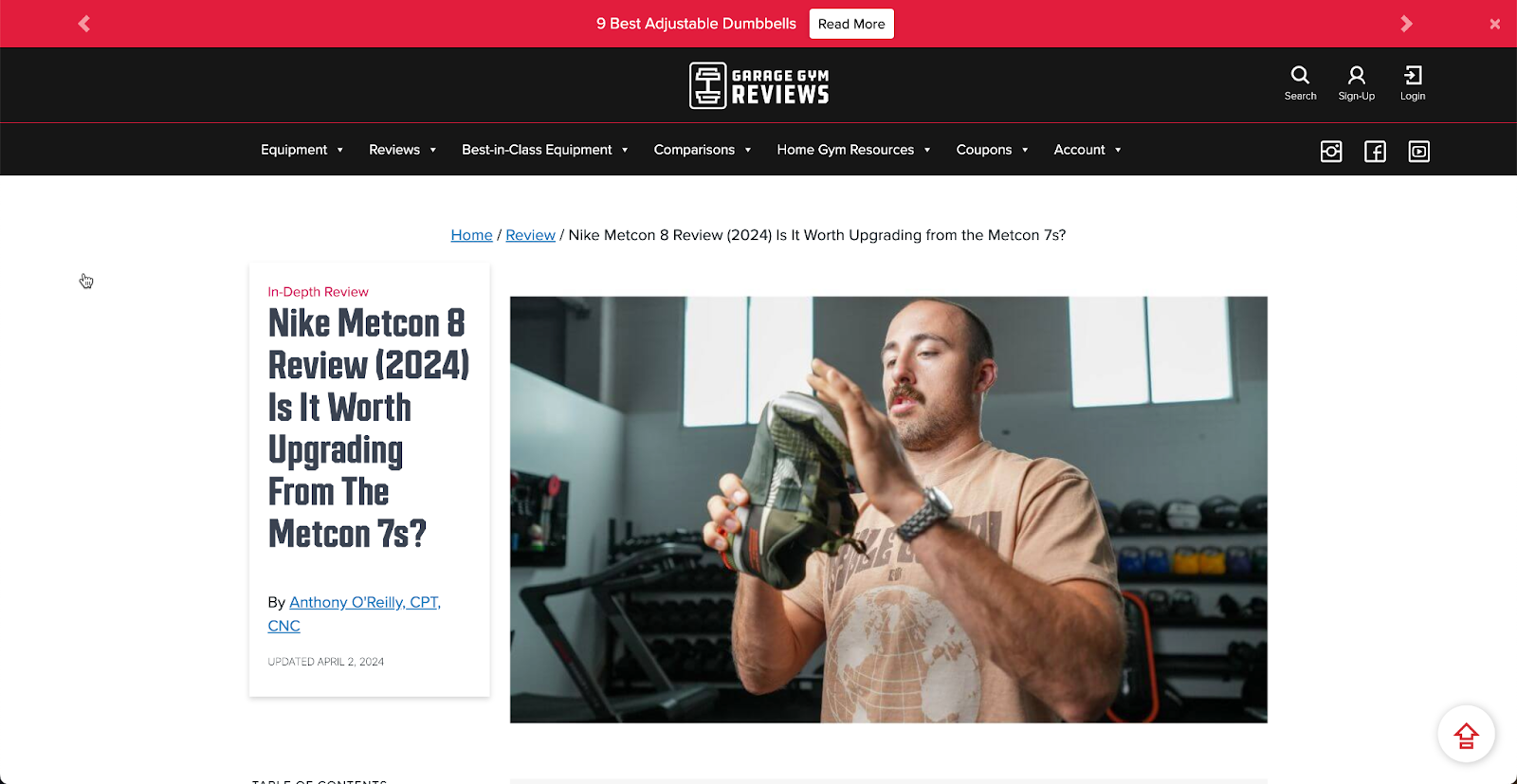
Garage Gym Reviews is known for their in-depth sports gear, home gym equipment, and health and wellness reviews. This story is a review of a Nike training sneaker called the Metcon 8. This isn’t a press release, but rather a first-person summary of their experience with the sneaker.
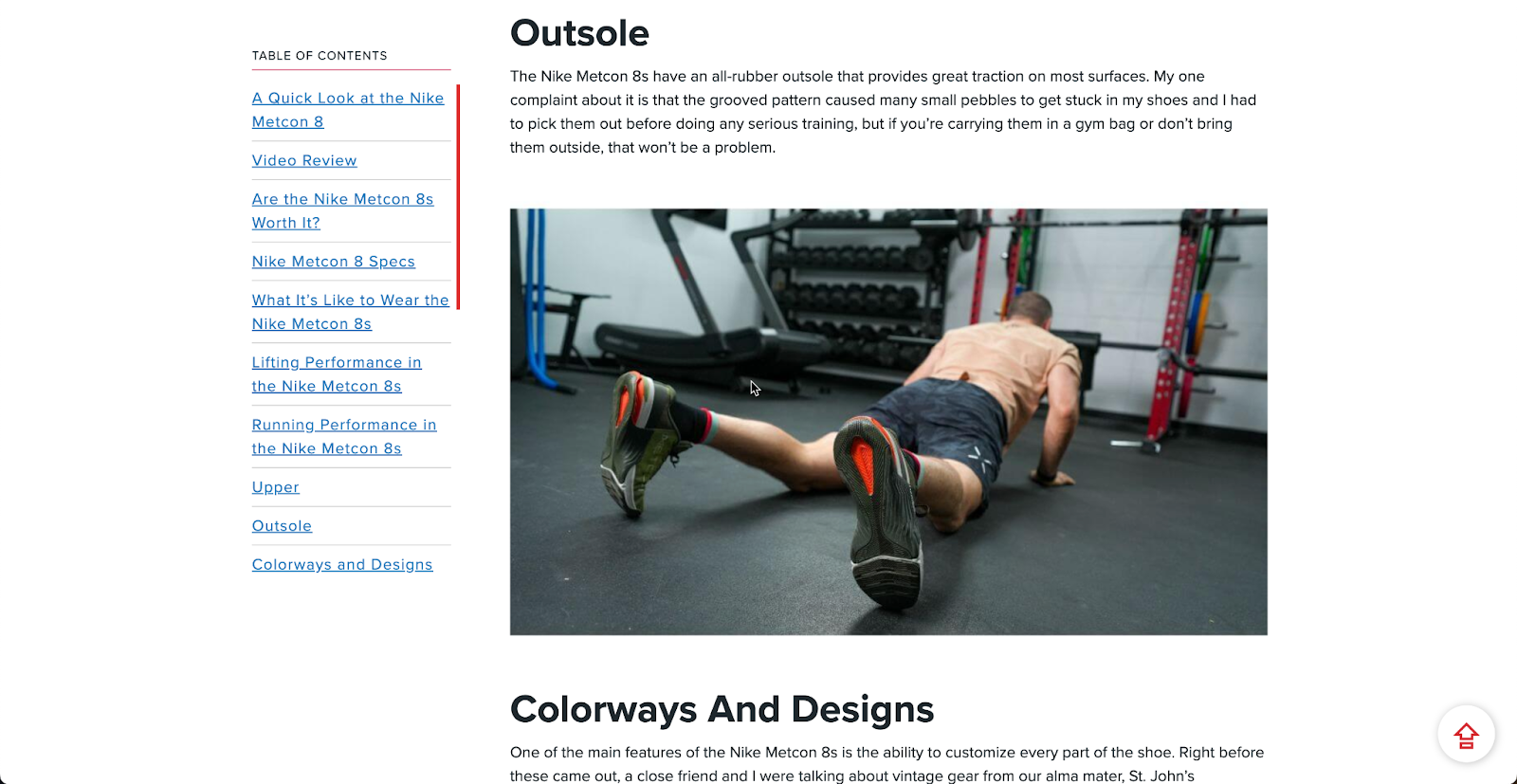
Notice how detailed the writer gets, detailing the specifications, explaining what it’s like to wear them at the gym, and talking about the materials and construction of the shoes.
Beautiful in-action photography shows everything that the writer talks about and adds further trust for readers.
The Points Guy’s American Express Platinum Credit Card Review

The Points Guy (TPG) started as a blog telling people how to hack their way to better credit card perks in their travel. The American Express Platinum card is a high-end luxury credit card specifically designed with travel in mind.
This review covers pros and cons of the card, the welcome bonus, and the perks that members receive as a part of their annual fee.

At the end of the review, you’ll notice an option to apply to the card, which takes you to a special TPG-specific American Express page.
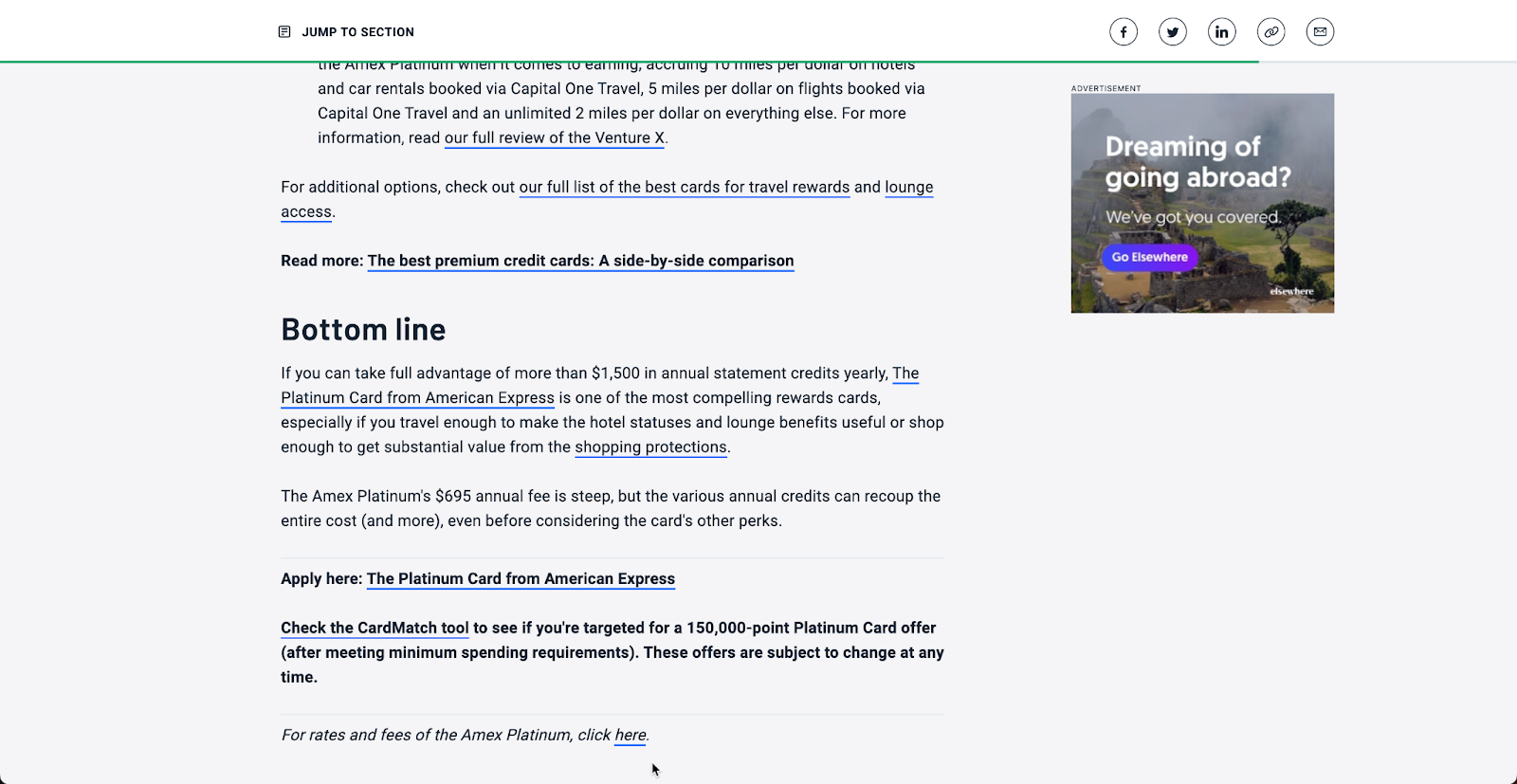
In this instance, TPG is likely paid a strong commission to incentivize more of their readers to apply for an American Express card. Publishers and brands can forge strong partnerships that offer readers unique discount codes or membership benefits.
Good Housekeeping’s Shark vs. Dyson Comparison
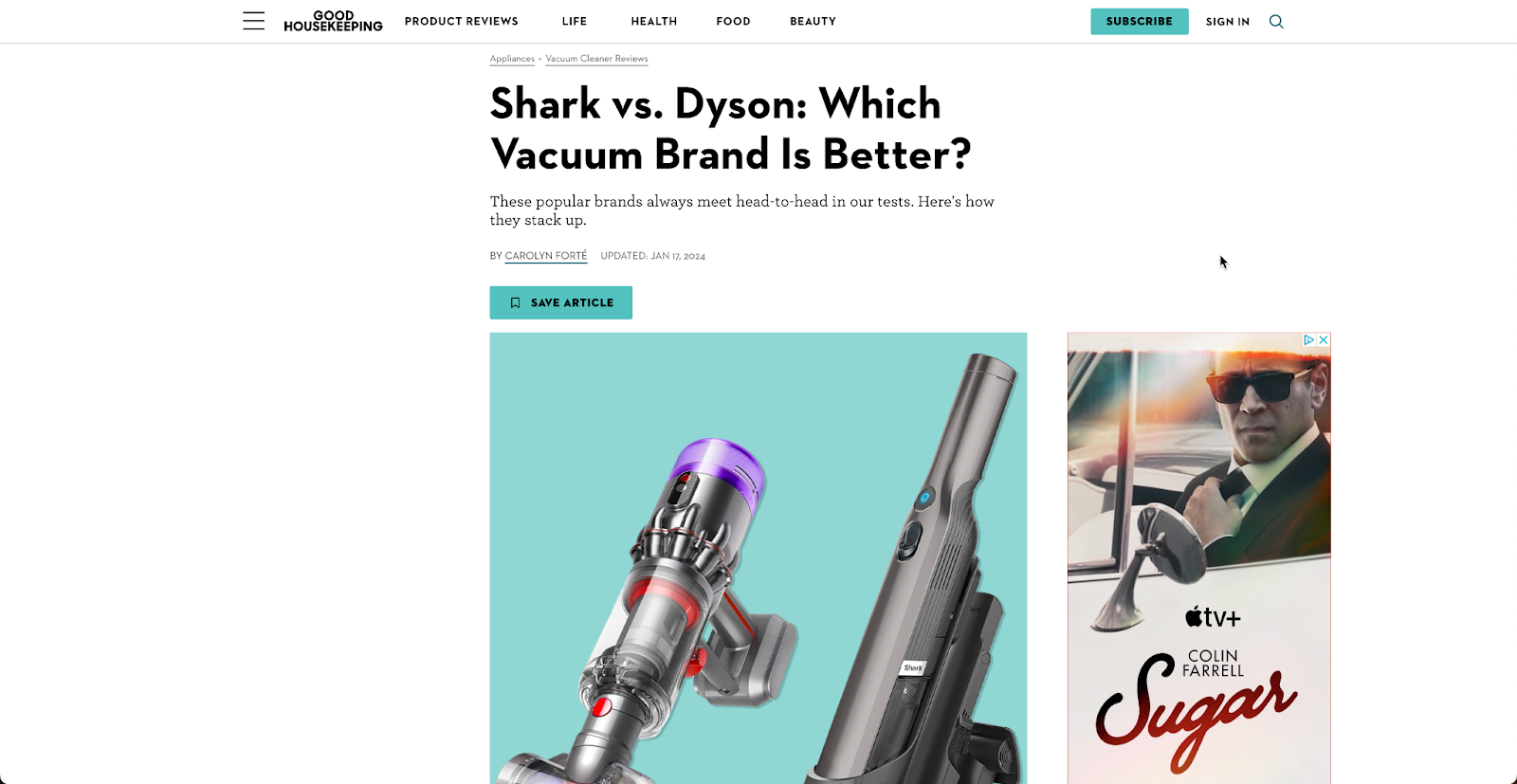
Good Housekeeping is known for its New York City-based testing lab where they’ve been testing products in person and informing consumers for years. (As a matter of fact, I got to take a tour of it a few years ago, I can vouch for the publisher’s thorough testing processes.)
This comparison is intended for people who are searching for terms like “shark vs dyson vacuum” and “dyson vs shark review,” to name a few. The article covers multiple products including handheld and stick vacuums from each brand, a price comparison, and the warranties both companies offer.
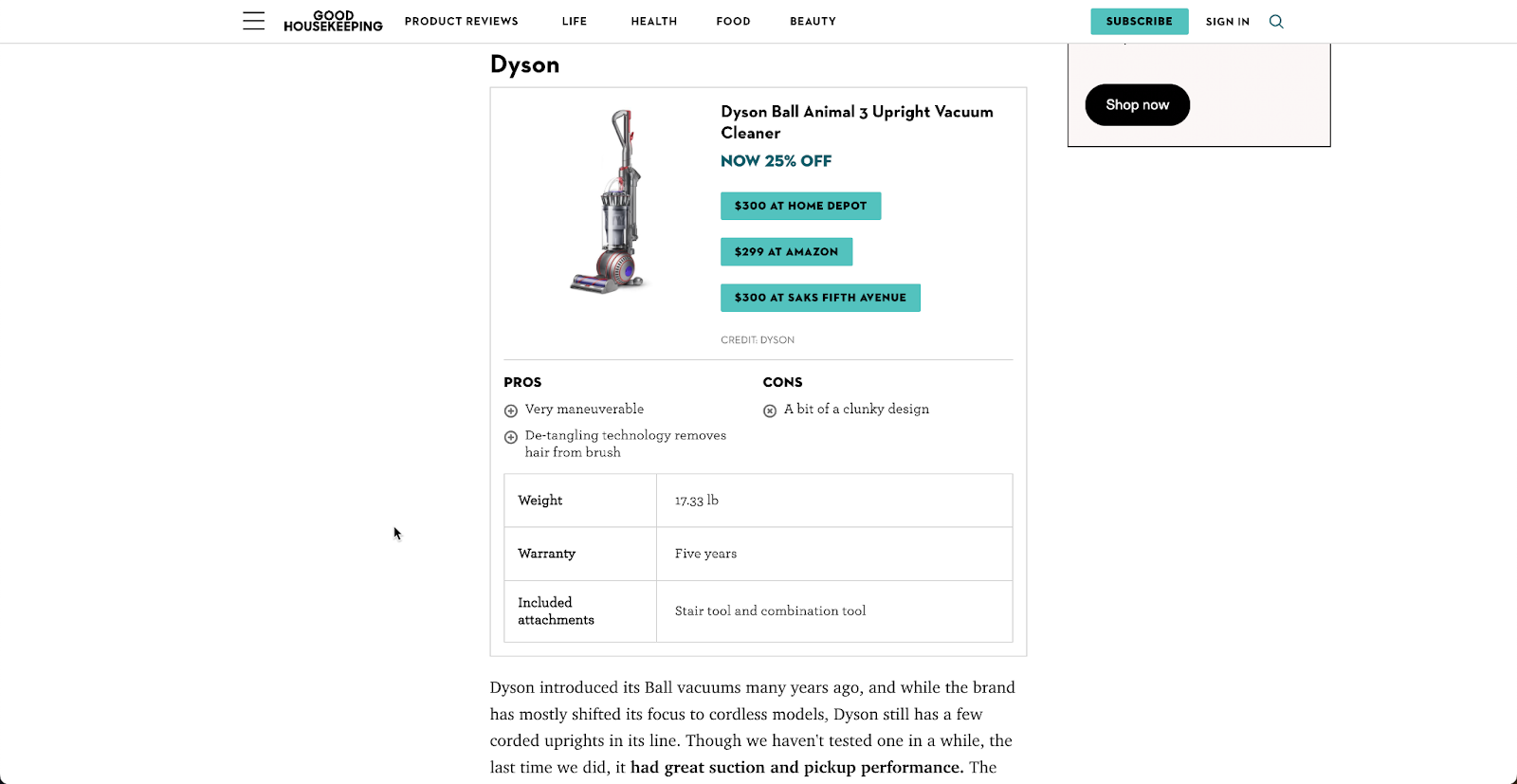
It ultimately declares a winner for each type of product with links to purchase from retailers like Amazon and Walmart, which Good Housekeeping negotiates special relationships with, versus directing readers straight to the brand’s website.
The Mom Edit’s Vuori vs. Lululemon Comparison
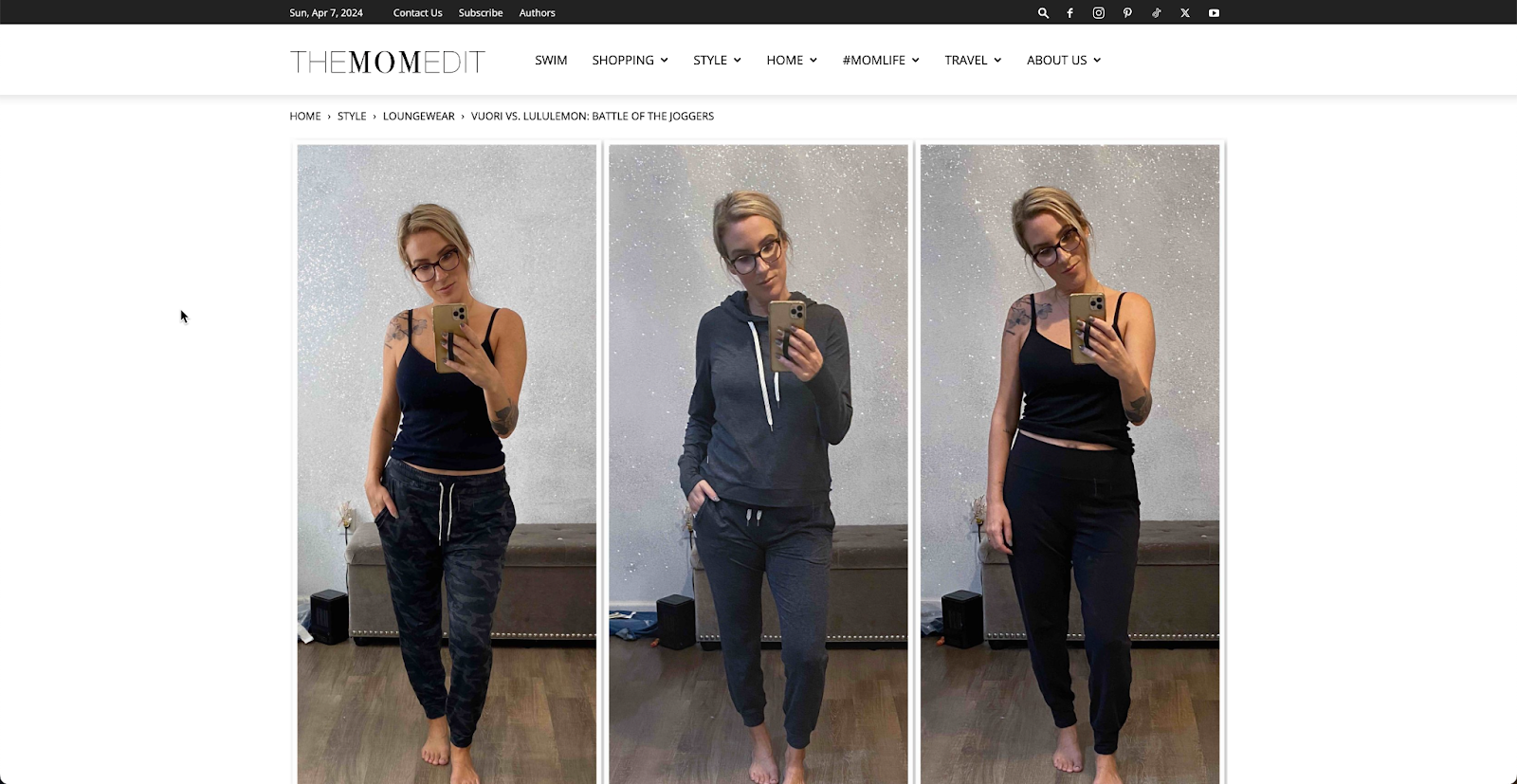
The Mom Edit is a type of site called a “mommy blogger.” These are niche sites covering topics that mothers are particularly interested in. This comparison piece puts two of the most popular athleisure brands, Vuori and Lululemon, head to head against each to see which one has the best joggers.
Ultimately, the writer likes both joggers equally, but she gives tailored advice based on the reader’s preference in lengths and fabrics.
How to Incorporate Commerce Content Into Your Business Today
If you run an ecommerce business, sell a digital product like a software or course, or even have a financial product like a credit card, then you can benefit from commerce content. This type of editorial-style storytelling is great for comparing multiple products that curate the best of the best for readers, or dedicated reviews that discuss all the features, advantages and disadvantages, and hands-on testing for a specific brand.
By now, you should have a solid understanding of what commerce content looks like, how it works, and some big publishers in the space. If you want to have your product featured in stories online, then the first step is to launch an affiliate program on a platform like Impact and start recruiting content creators.
If you’re just starting to venture into the world of ecommerce and want to learn about dropshipping, Amazon FBA, and more, then visit Whop.com for resources to help you sell physical and digital products online. Whop is the best place for entrepreneurs of all kinds looking to start or scale their businesses.
Anyone can become an entrepreneur using Whop. Find out how to get started.





